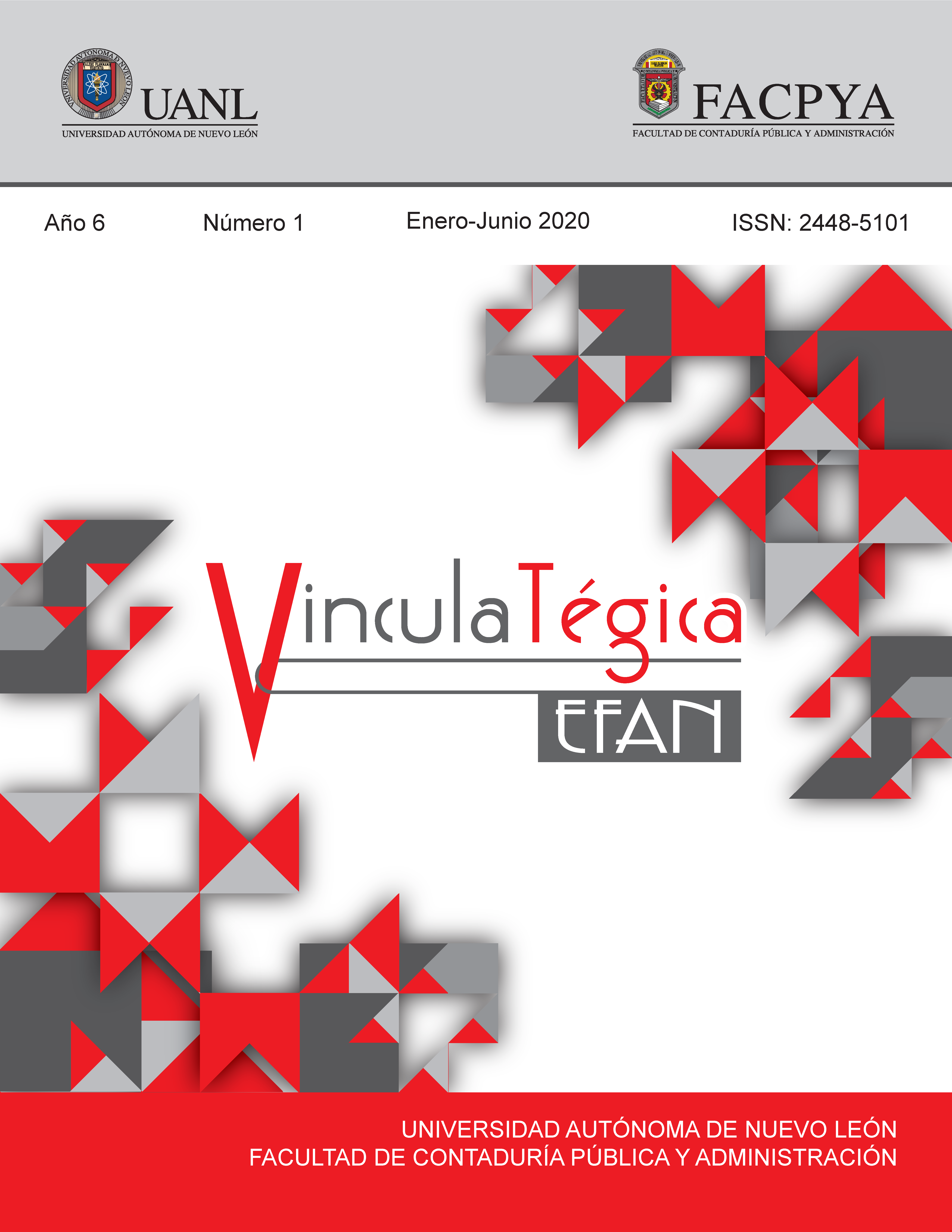Impacto laboral del sindrome de procusto, en empresas familiares, estado de Coahuila
DOI:
https://doi.org/10.29105/vtga6.1-561Keywords:
Síndrome, psicológica, síndrome de procusto, empresa familiarAbstract
At present, family businesses are struggling to stay
current taking care of the quality of human talent, which
guarantees their permanence and transcendence, this has
been threatened by what is known as the Procusto
syndrome which is the impossibility of recognizing the
abilities of others, the fear of being overcome in our
professional conditions, the suspicion of the truth
explained by our neighbor and mainly envy can lead us
to suffer from the syndrome. The importance of
identifying and controlling those aspects that cause this
syndrome and what allow the organization to carry out
in an effective and efficient way each and every one of
its controls and that with this it manages to be prepared
for the new challenges of the internal and external
environment in Those who are immersed and achieve
their consolidation over time.
Downloads
References
Belausteguigoitia, R. I. (2010). Empresas Familiares. Su dinámica, equilibrio y consolidación. 2ª Ed. México: Mc Graw Hill.
Chua, J., J. Chrisman y P. Sharma (1999). Defining the family business by behavior. Entrepreneurship Theory and Practice 23 (4): 19-39 DOI: https://doi.org/10.1177/104225879902300402
Croutsche, J., J. y B. Ganidis (2008). Diversité des enterprises familiales. La Revue des Sciences de Gestion, Direction et Gestion, avril (230): 93-98. DOI: https://doi.org/10.1051/larsg:2008023
Juian, P. (2012). Definiciones. Recuperado el 22 de 08 de 2018, de https://definicion.de/sindrome/
Maher D. (2009) Standardized interventions in international health: Procrustes, where are you now? Trop Med Int Health; 14: 1162-4. Muhimu. (2016). DOI: https://doi.org/10.1111/j.1365-3156.2009.02363.x
Muhimu. Recuperado el 23 de 08 de 2018, de https://muhimu.es/comunidad/sindrome procusto/
Navarro de Granadillo K. (2008). Estado actual de la investigación sobre la gestión del conocimiento en empresas familiares. Revista de Ciencias Sociales Vol. XIV, N° 1. Recuperado de: http://www.scielo.org.ve/scielo.php?script=sci_arttext&pid=S131595182008000100004&nrm =iso&tlng=pt DOI: https://doi.org/10.31876/rcs.v14i1.25385
Nelson, D. &. (2013). CORG, Comportamiento Organizacional (Tercera ed.). Cengage Learning, Inc.
Núñez, A. (2016). TICbeat. Recuperado el 23 de 08 de 2018, de http://www.ticbeat.com/empresa b2b/que-es-el-sindrome-de-procusto-ycomo-descubrir-si-lo-padeces-en-el-trabajo/
Tagiuri, R. y J. Davis. (1982). Bivalent attributes of the family firm. Working Paper, Harvard Business School, Cambridge, Massachusetts. [Reprinted in 1996 by Family Business Review IX (2): 199- 208].
Trevinyo Rodríguez, R. (2010). Empresas Familiares. Visión Latinoamericana. Estructura, gestión, crecimiento y continuidad. México, Pearson.
Ynfante, R. (2008). Gestiopolis. Recuperado el 14 de 04 de 2019, de https://www.gestiopolis.com/los incentivos-y-la-motivacion-laboral/
Zimbardo P. (2008) El efecto Lucifer, Editorial Paidós, Barcelona.
Downloads
Published
How to Cite
Issue
Section
License

This work is licensed under a Creative Commons Attribution 4.0 International License.
a). Authors keep copyright and give the journal the right of the first publication of the work under a Creative Commons attribution license. This license allows others to share the work as long as original authorship and initial publication in this journal is acknowledged.
b). Authors may make other independent and additional contractual agreements for the non-exclusive distribution of the version of the article published in this journal (e.g., include it in an institutional repository or publish it in a book) as long as they clearly indicate that the work was published for the first time in this journal.







